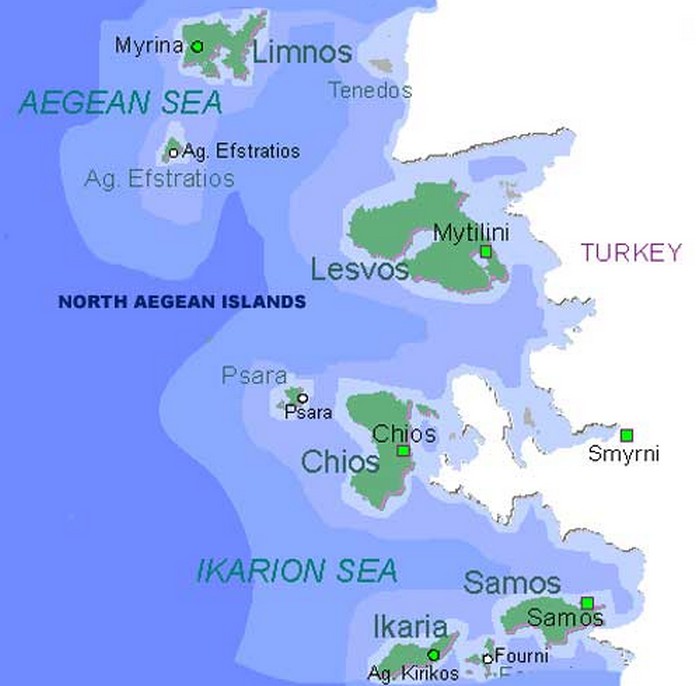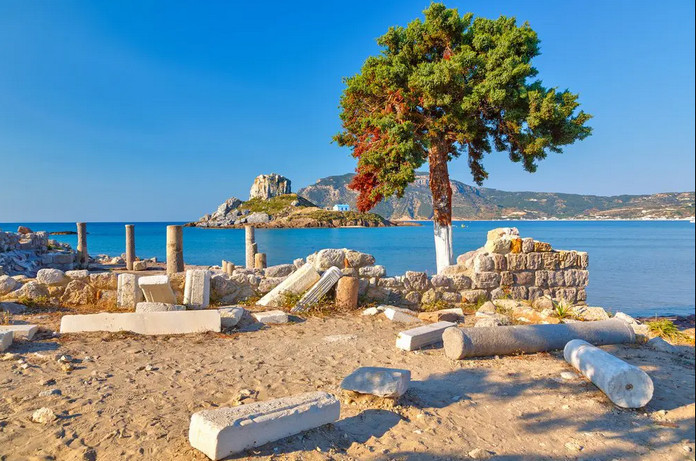There are 11 main islands, real pearls of the Aegean and a host of islets set one below another forming a zig zag line starting in Kavala, Macedonia and ending in the Dodecanese. Several of them, Lesvos, Chios and Samos in particular are very close to Asia Minor, so close that you can often see across the strait that separates them, the roads, the houses and the fertile fields of the East.
The most northerly of them all is Thassos, with its lofty pines opposite the shores of Macedonia. South of Thrace is Samothraki, the island where the famous Nike was found.
Even further south is Limnos, the island of Hephaestus and Agios Efstratios in the middle of the Aegean.

This is followed by Lesbos, a large verdant island with beautiful bays and a petrified forest .
Further down is Chios, the island with the fragrant mastic trees and medieval villages. Opposite lies the small Oinousses with its ravishing beaches and further away the illustrious Psara. More south is the lovely Samos, the island of Pythagoras, covered in forests with dazzling white sand beaches.
To the west is Ikaria, a lush, mountainous island with a rural kind of beauty. Between Samos and Icaria are the islets of Fourni with their picturesque fishing harbours.
You can go to Lemnos and Lesbos by plane from Athens and Thessaloniki but only from Athens to Chios and Samos. Between the islands there are ferry and hydrofoil services which are less frequent when the summer season ends.
On these islands, poetry, music and philosophy all have their representatives: Sappho, Alkaios, Pythagoras, Pittakos, Theophrastos and Aristarchos in the ancient world, and in more recent times, Theophilos, Myrivilis and Panselinos.
The pride of these islands, however, is Homer who was born in Chios. The islands were inhabited by Ionians in ancient times and reached the height of prosperity and influence in the archaic period, when they produced outstanding figures in literature, arts and politics.

They were conquered by the Persians and liberated after the end of Persian wars (479 BC) when they became members of the Athenian Confederacy. After the Byzantine empire fell to the Franks (1204) the islands initially formed part of the Latin Empire of Constantinople and then came into the hands of Venetian and Genoese families.
After the fall of Constantinople to the Turks (1453) they were conquered one by one and suffered terribly under Turkish domination. The inhabitants of these islands played an active role in the Greek War of Independence in 1821 with their ships. The sacrifice of Greek patriots in the massacre of Chios (1822) and the massacre of Psara had a great impact on the whole of Europe.